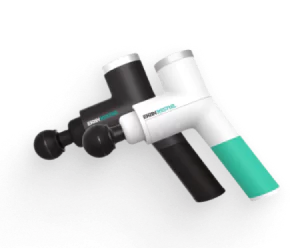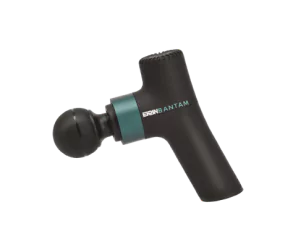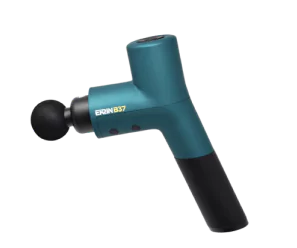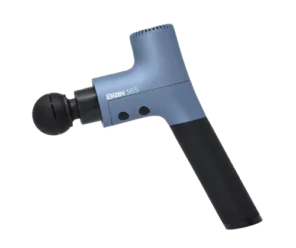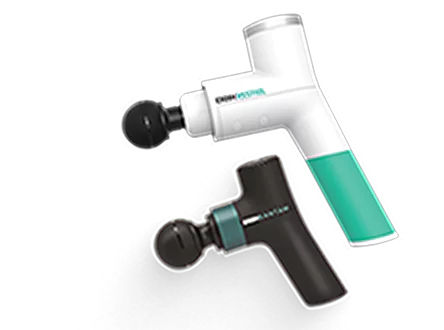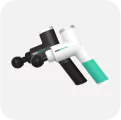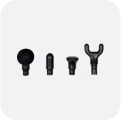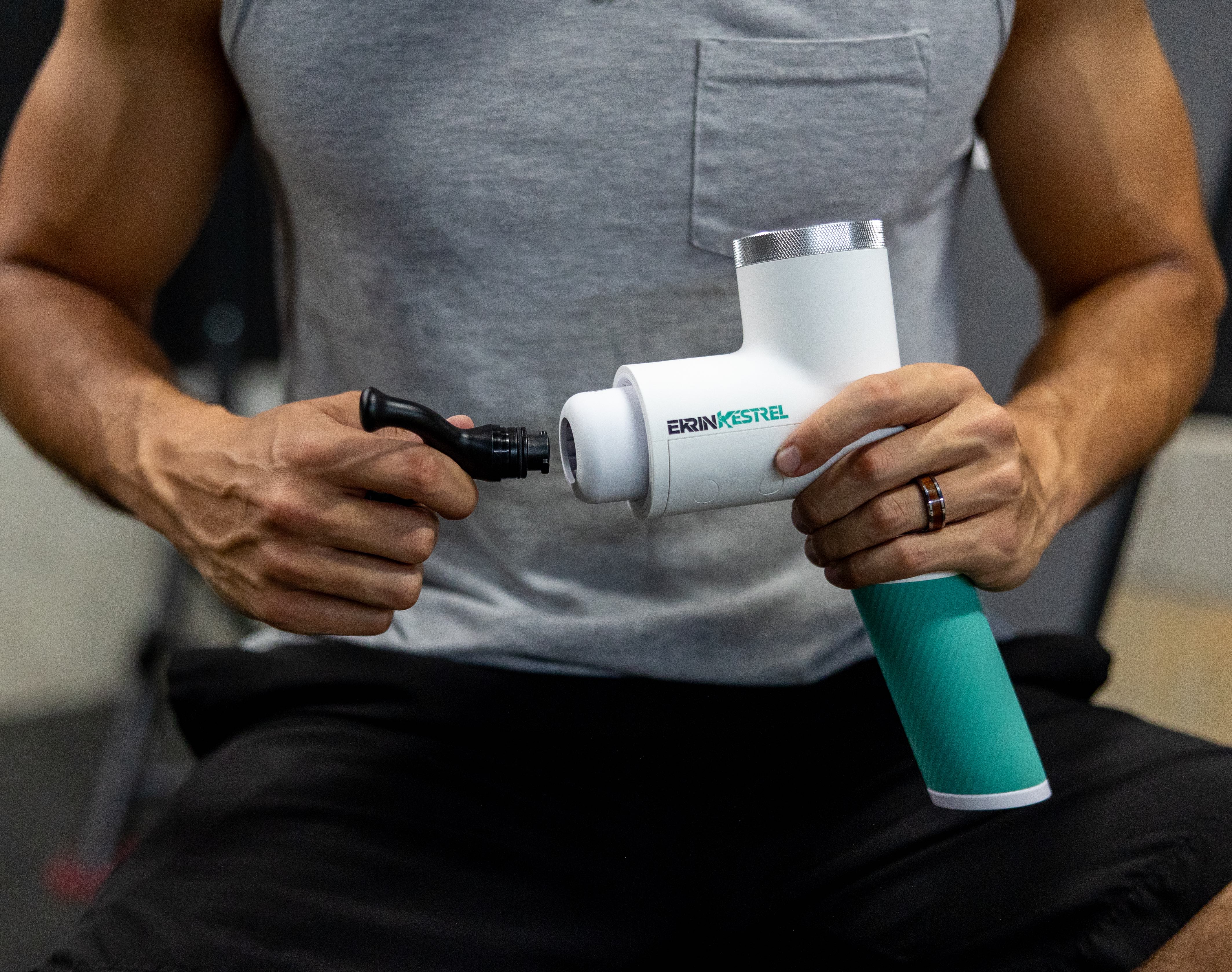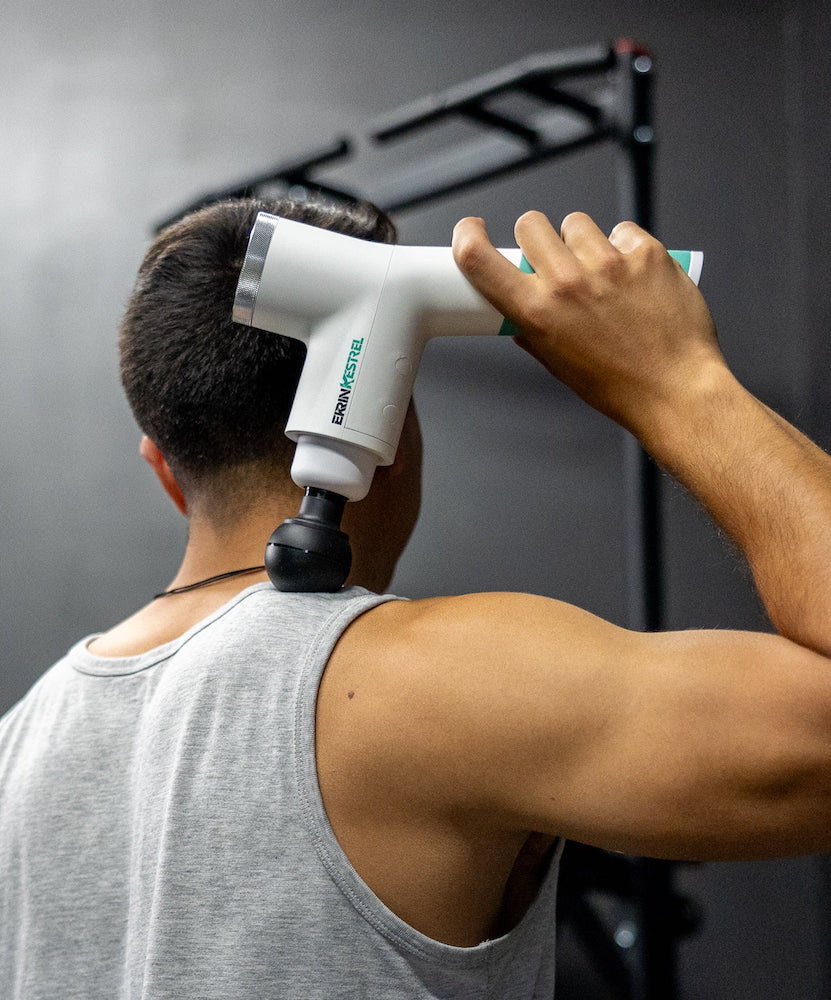
Foam rolling and percussive massage are two of the most popular methods for dealing with muscle soreness. Like all things, both athletic recovery modalities have their pros and cons — in this article, Ekrin Athletics’ experts in percussive therapy take a fair look at foam rollers versus massage guns and help you decide which one best suits your needs.
Foam Roller Pros and Cons
Once upon a time, foam rollers lay forgotten in the corner of your gym, but these days they’re all the rage. They offer several advantages, but do have some disadvantages as well.
Pros of foam rollers:
- Gentle on tight spots and tender areas
- Can cover a large area of your body at once
- Inexpensive to purchase
- Come in a variety of sizes, textures, and densities
- Can use them for flexibility and mobility exercises
Cons of foam rollers:
- Awkward to travel with
- Can’t target small areas
- Doesn’t reach deep layers of muscle

Percussive Massage Pros and Cons
Like foam rollers, massage guns have their own set of benefits and drawbacks.
Pros of percussive massage:
- Offers quick relief from sore muscles
- Easy to travel with
- Backed by science
- Easier to use than foam roller
- Deeper, intense massage
- Targets small, hard-to-reach areas
Cons of percussive massage:
- Pricier initial investment than foam rolling
- Can’t cover a large area of your body like a foam roller
- Some people may be too sensitive to the force

When to Use a Foam Roller
Use a foam roller when:
You have extremely sore and tender muscles: Did too much at the gym? Oops. We’ve all been there, and even as big fans of percussive therapy, we know it can sometimes just be too much.
You’re nursing an injury: You shouldn’t apply the force of a percussive massage gun to any muscle strains, ligament sprains, or other injuries. Foam rolling provides a gentler, safer way to work around injuries — but be sure to get your doc’s approval first.
You want an active cool-down: If you tend to skip cool-downs after workouts, using a foam roller might encourage you to add a cool-down to your routine. I mean, who doesn’t look forward to lying on the ground and mashing some muscles? The relaxing nature of foam rolling can help your body return to its resting state after an intense sweat sesh.
When to Use Percussive Massage
Percussive massage guns really come in handy in the following scenarios:
You need quick relief from muscle aches: Unlike foam rolling, percussive therapy provides near-instant relief from sore, tight muscles. Whether you need to knock out neck tightness or prime your lower back for a workout, a massage gun is the way to go.
You could use some assistance warming up: On cold days or sore days, a percussive massage gun can give your muscles the jumpstart they need to get working. Percussive therapy promotes blood flow, which will have you feeling warm in no time.
You’re on the go: Foam rollers are large and clunky, making them hard to travel with. Massage guns, on the other hand, are smaller and usually come in carrying cases. Mini massage guns can be just as effective as full-size ones, as evidenced by the Ekrin BANTAM.

Foam Roller vs. Massage Gun:
The Verdict
Based on their respective pros and cons, foam rollers and massage guns suit different people better. For example, you might choose a foam roller if you’re on a tight budget, you feel very sensitive to powerful massages, or only exercise occasionally.
On the other hand, you might choose a percussive massage device if you exercise several times per week, enjoy or need deep massages on a regular basis, and want to travel with your recovery device.
While fitness trends typically come and go, it’s clear that both foam rolling and percussive therapy are here to stay. The benefits are simply indisputable, and both muscle recovery techniques are simple to utilize.
It’s ultimately up to the individual to decide whether foam rolling or percussive therapy is best, but if you’re interested in what percussive therapy can do for you, we invite you to take a look at our lineup of percussive massage guns.


